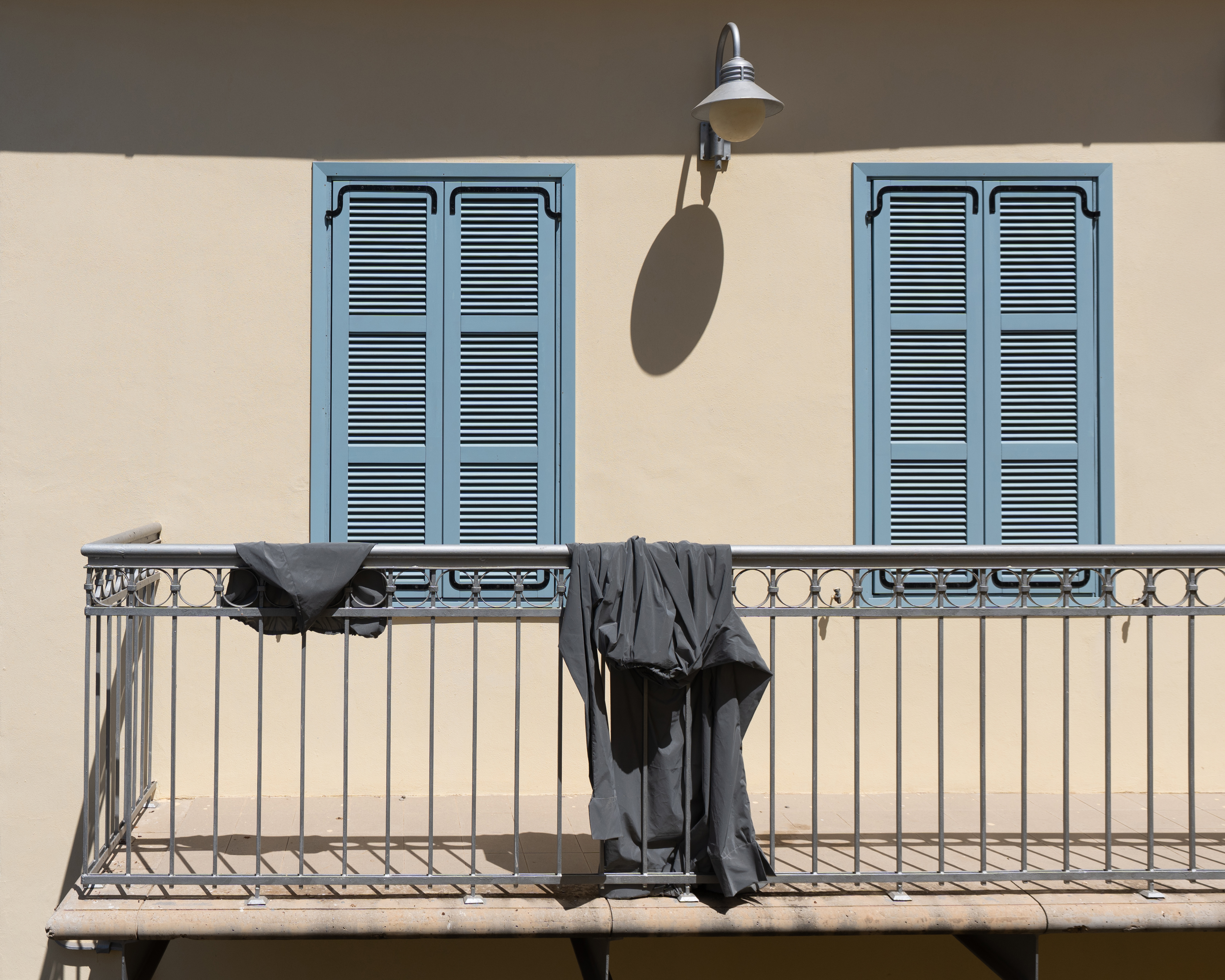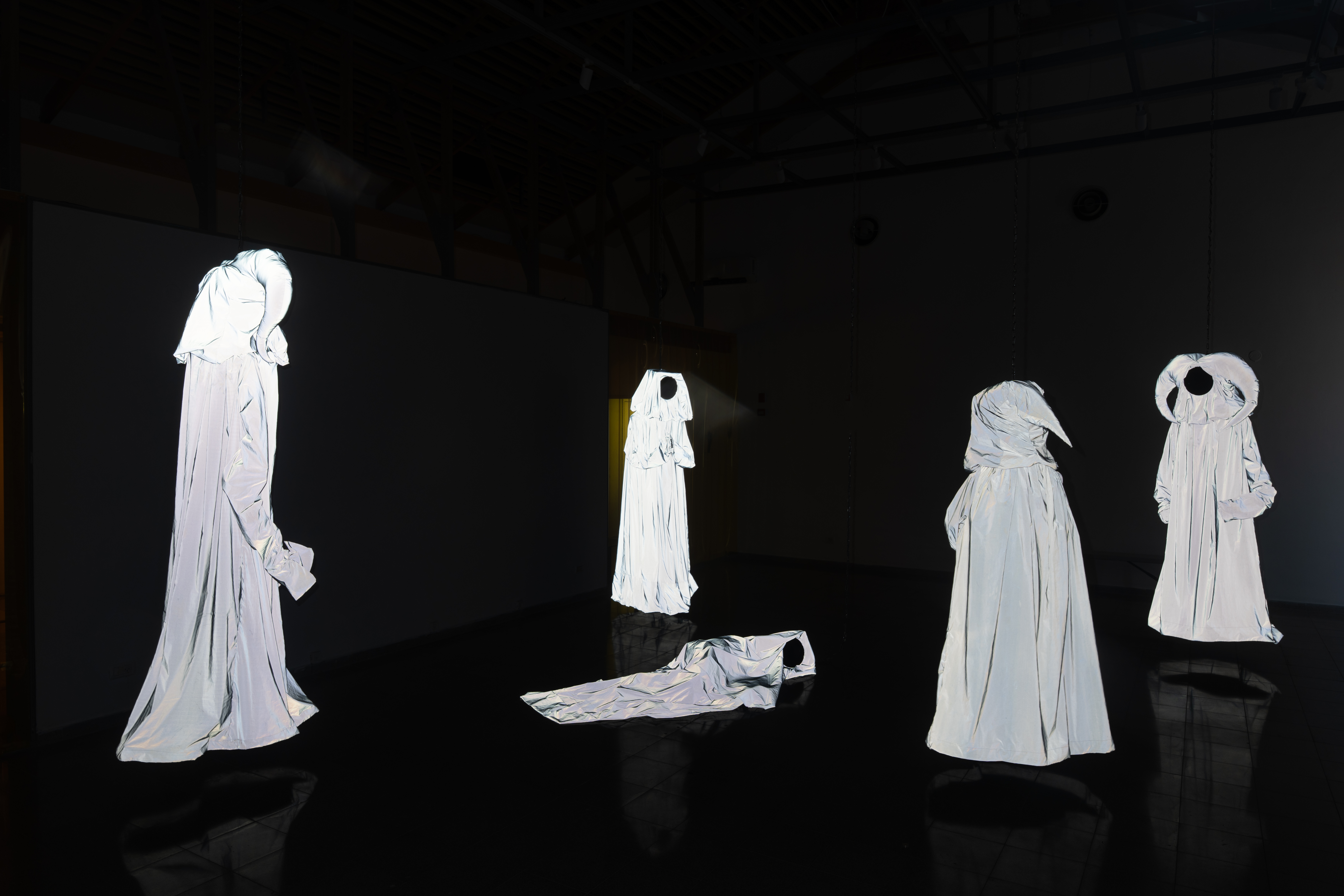Orpheus
Orpheus (2025)
Nachum Gutman Museum of Art, Tel Aviv
Curator: Monica Lavi
Original Music: Avshalom Hasfari
Imagery by Maya Erlich
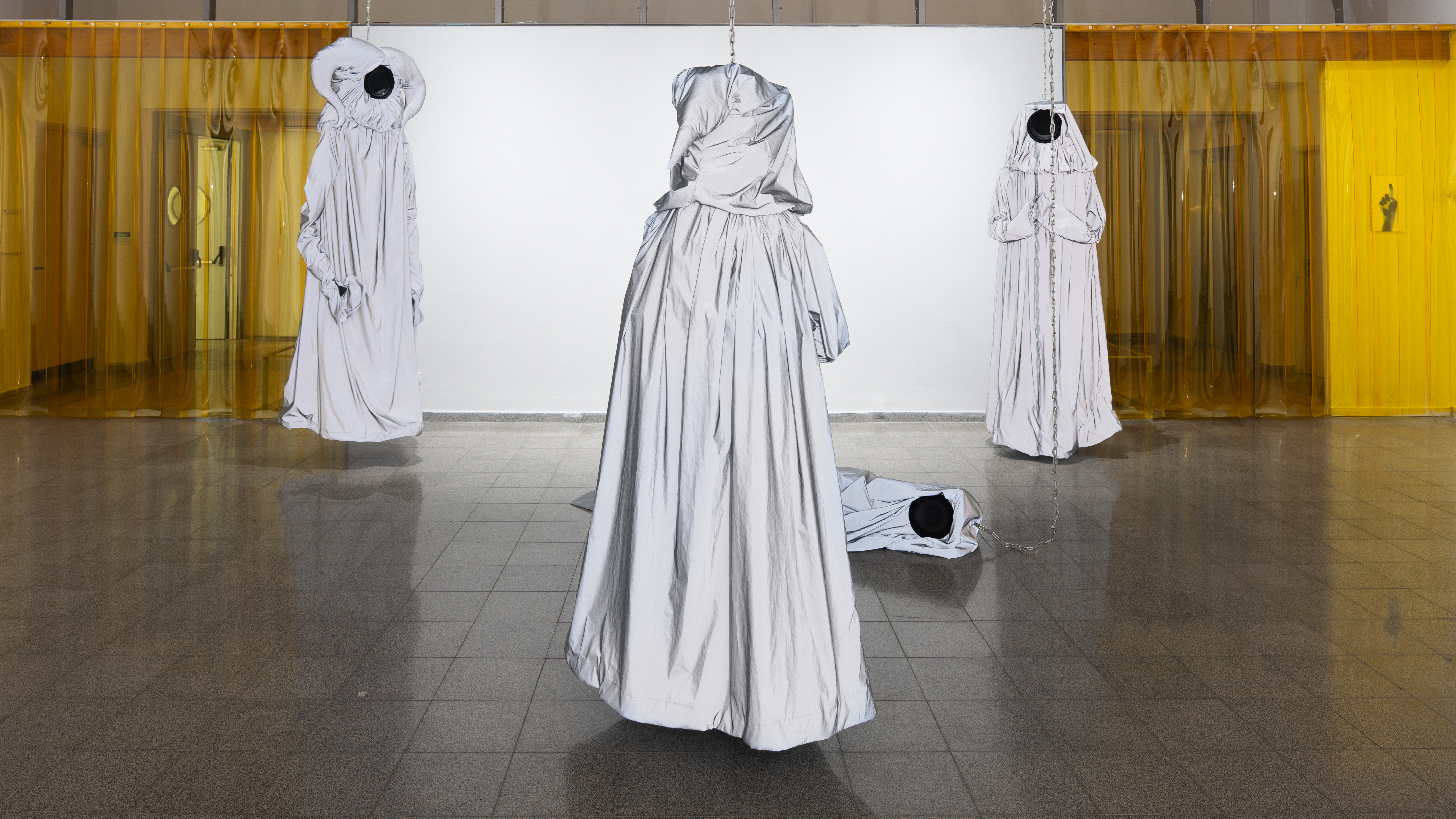
At the heart of the exhibition, the sculptural installation unfolds through five sound pieces, each composed from sampled and processed human voices. These sonic fragments trace the five stages of grief articulated by Elisabeth Kübler-Ross: denial, anger, bargaining, depression, and acceptance. Rather than forming a linear or narrative progression, the sounds emerge as states of affect: shards of denial surface as fractured, hesitant beats, resisting acknowledgment of death; they give way to sharp bursts of anger; then to cyclical patterns of bargaining, echoing a plea that returns obsessively; followed by a slow descent into the weighted resonance of depression.
The final stage, acceptance, assumes a pivotal role. Here it is not rendered as dissolution or passive resignation, but as a charged moment of active recognition: the instant in which Orpheus, having traversed all stages of grief, turns to look back at Eurydice despite the fatal condition placed upon him. That glance becomes at once rupture and reconciliation an unflinching recognition that the beloved cannot return, coupled with a profound embrace of finitude. In this gesture, grief does not vanish but integrates into the very fabric of identity and memory.
In this way, sculptural sonic environment transcends the mere delineation of psychological stages. It offers a journey toward the threshold where death ceases to appear as an adversary to resist and instead becomes a presence one must learn to carry. Acceptance emerges not as an end but as a passage, akin to the myth itself: an opening into another dimension of existence memory.
Installation views by Tomer Fruchter
︎︎︎ Video documentation
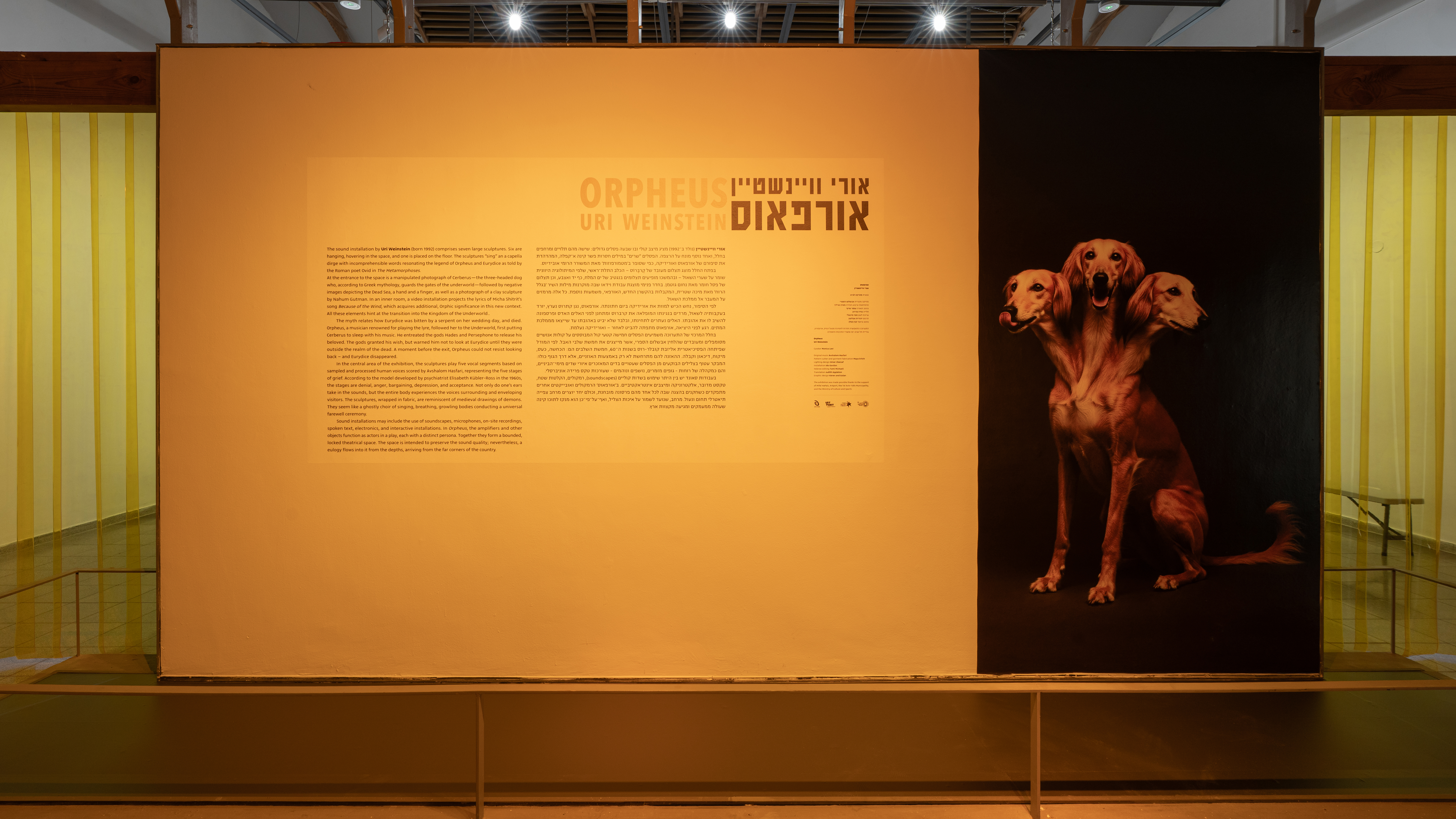
 Yoslberus (2025)
Yoslberus (2025)wallpaper print, 290 x 150 cm
Cerberus, the three headed dog whose job was to prevent the living from entering and the dead from leaving. Orpheus played a tune so beautiful and sad that it managed to soften even the heart of the guard. The sounds of the music moved Cerberus so much that he let Orpheus pass without resistance.
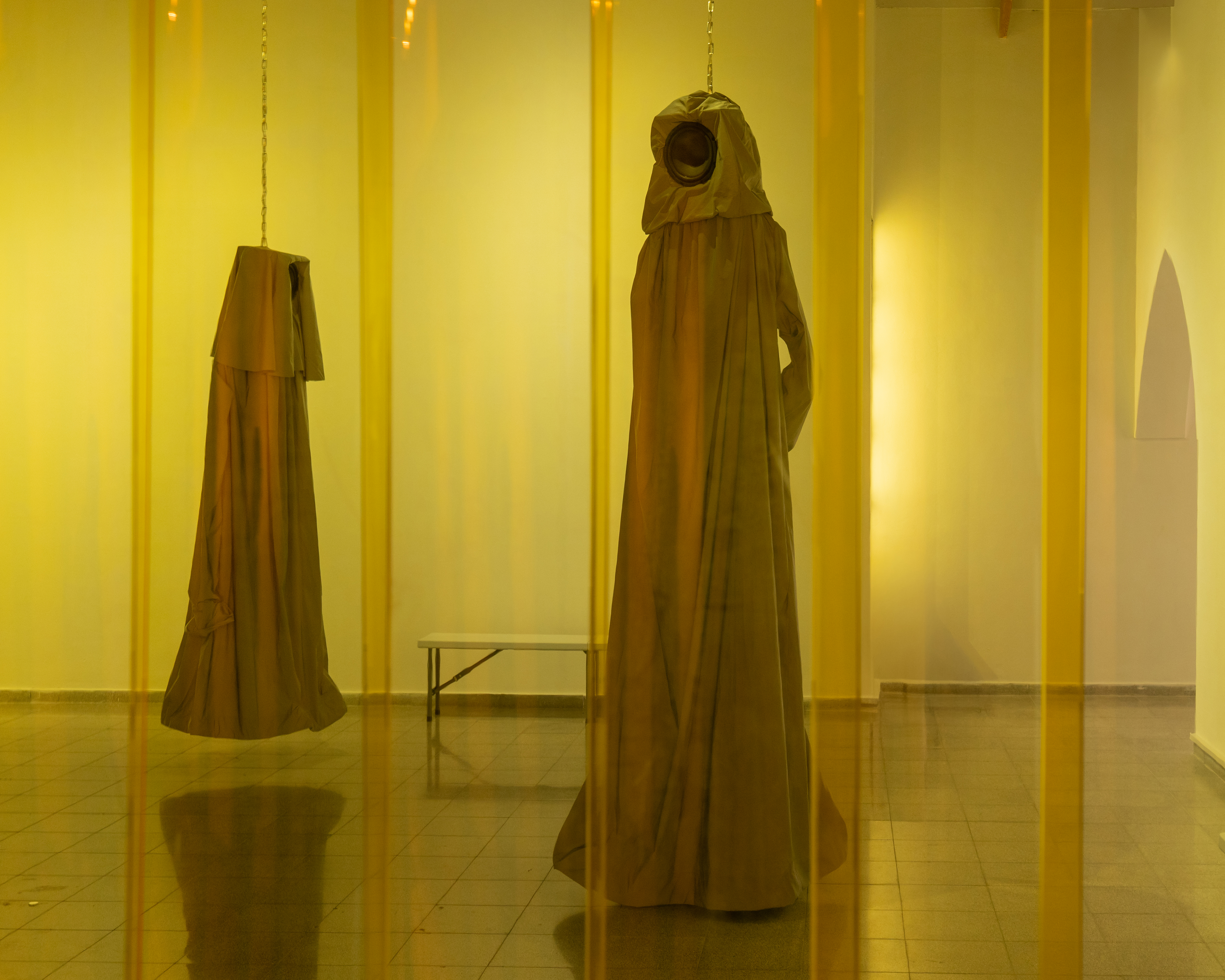
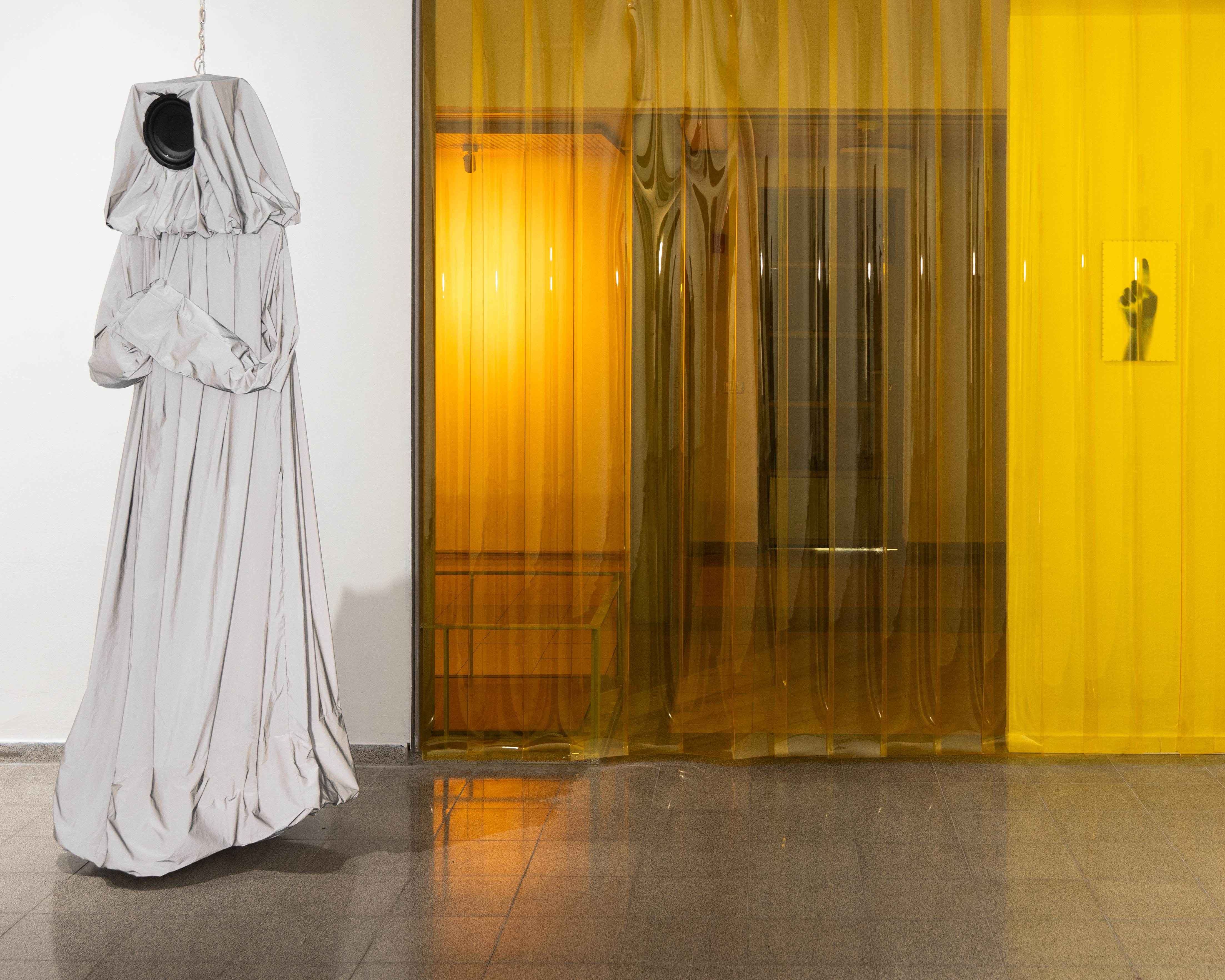
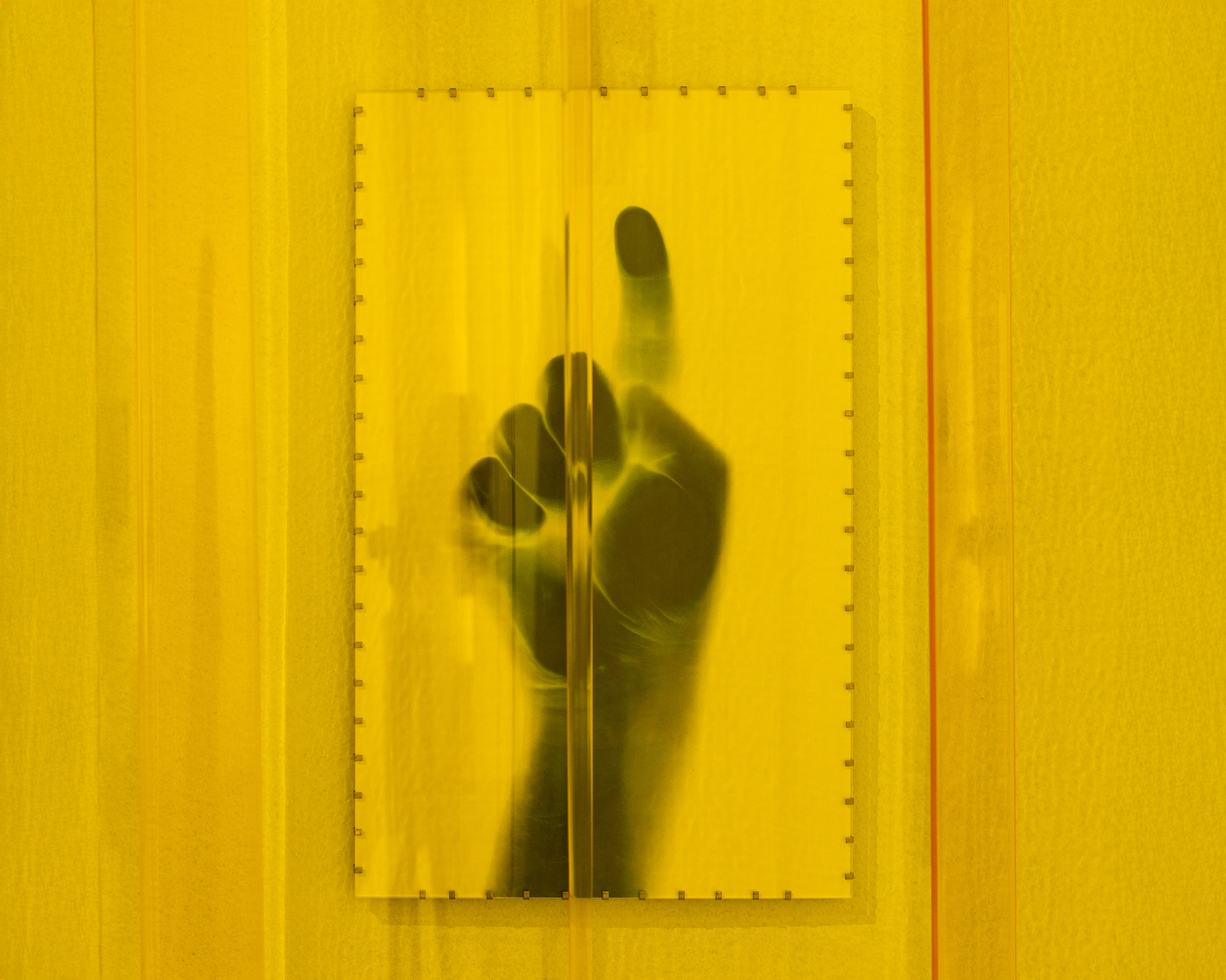
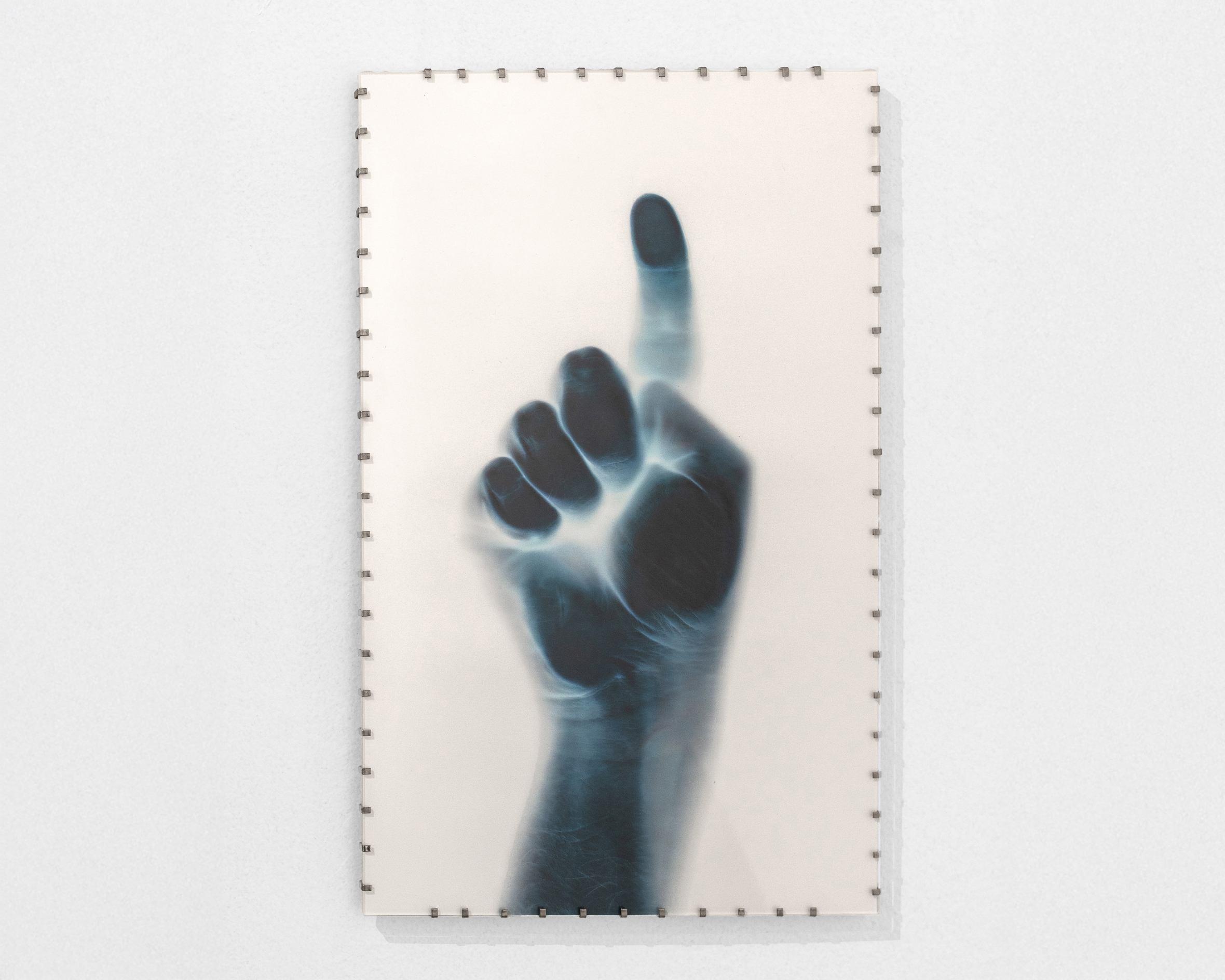 The condition (2025)
The condition (2025)digital printing, 25x41 cm
When Orpheus descended into the underworld, he convinced Hades to bring Eurydice back. The condition was that Orpheus had to walk ahead of her and couldn't look back until they were outside. This condition represents the limits of human ability and the impossibility of returning to the past.
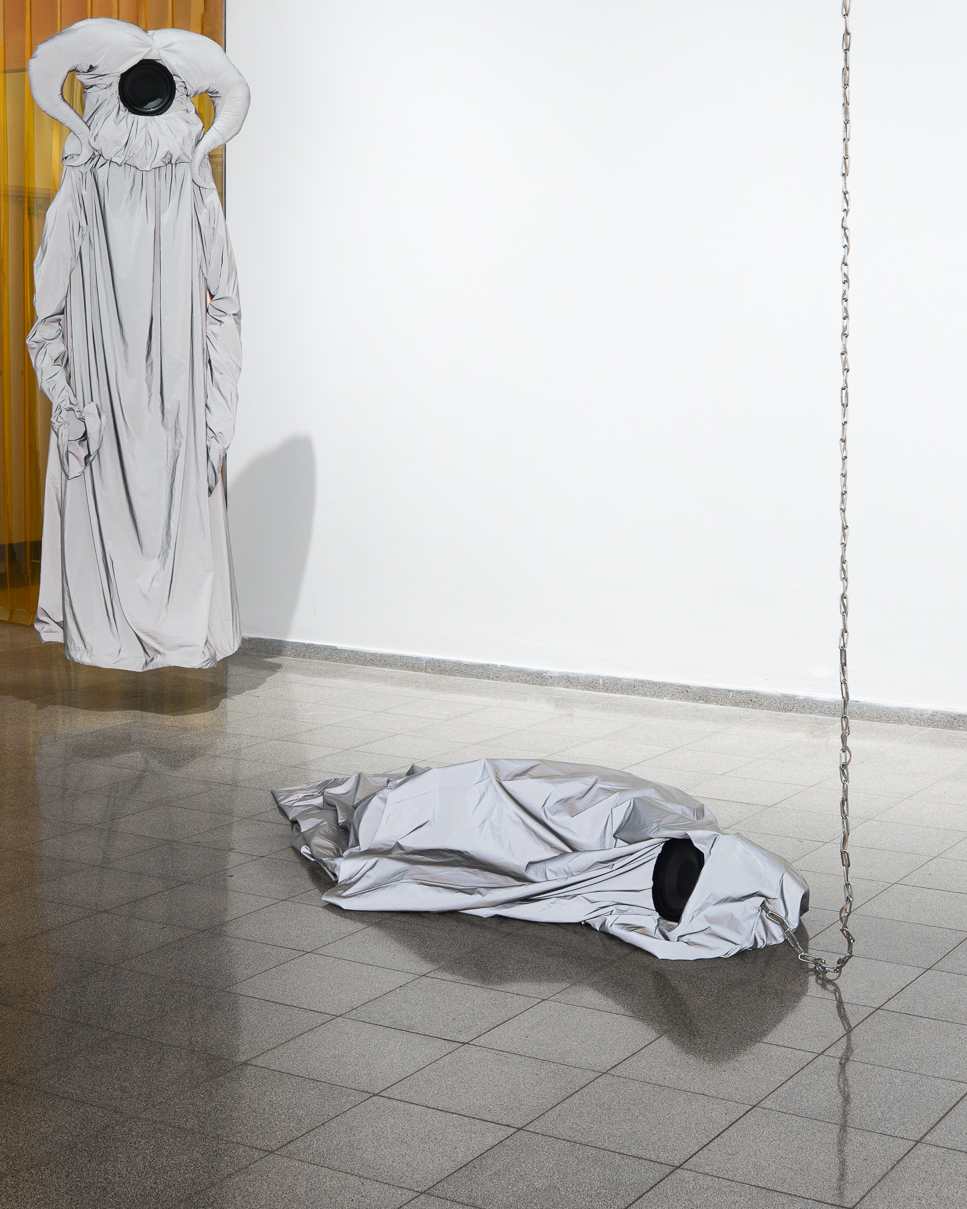
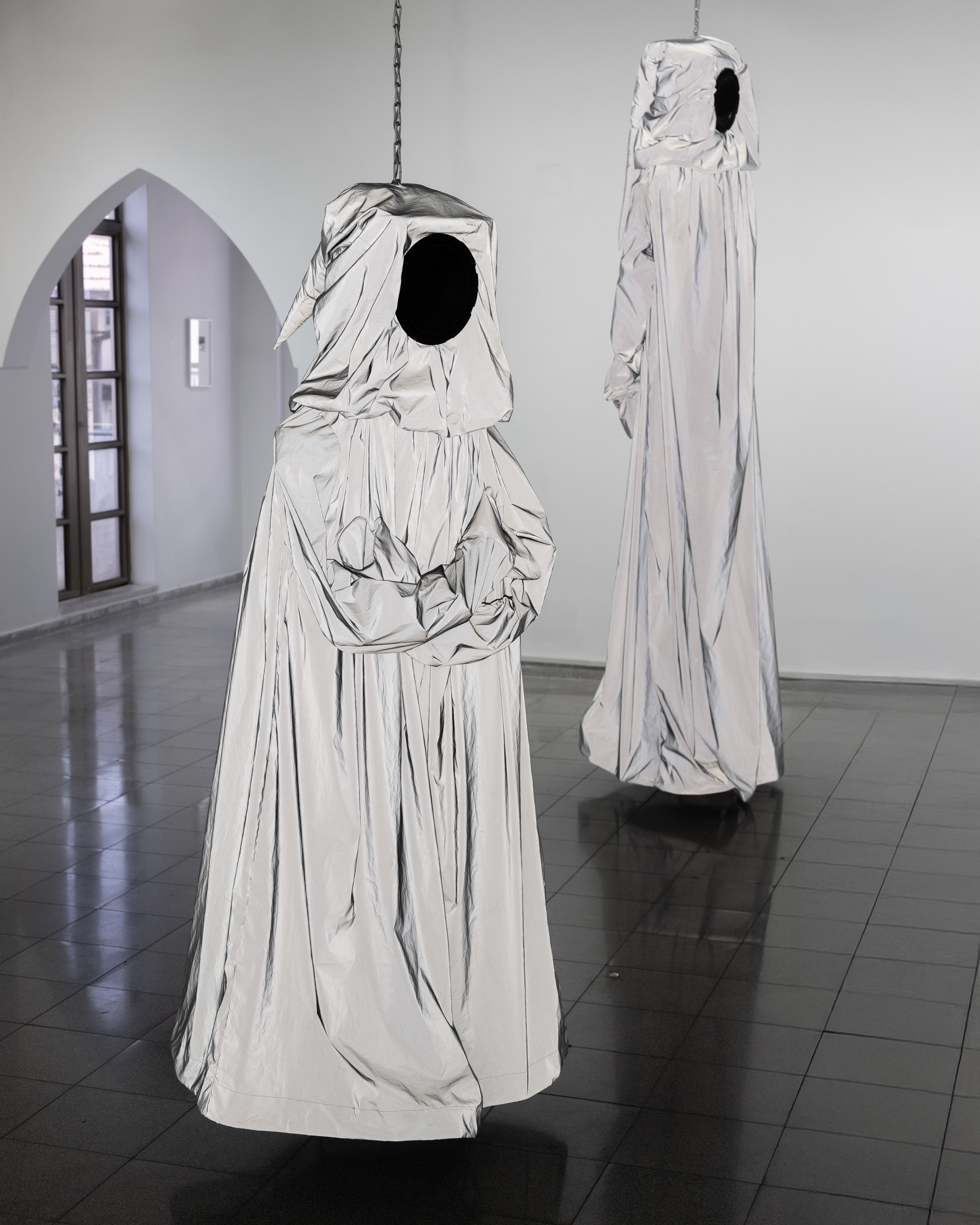
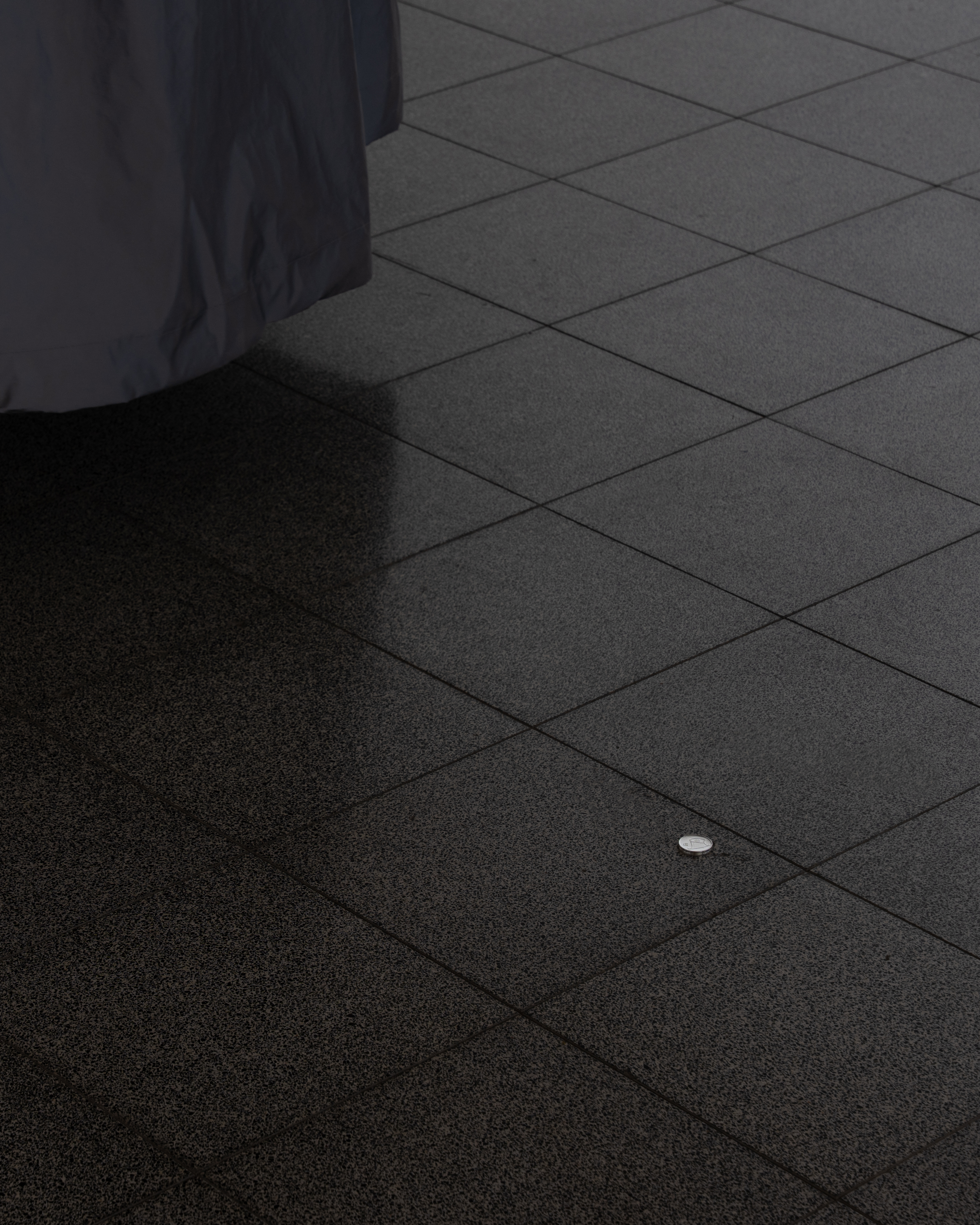
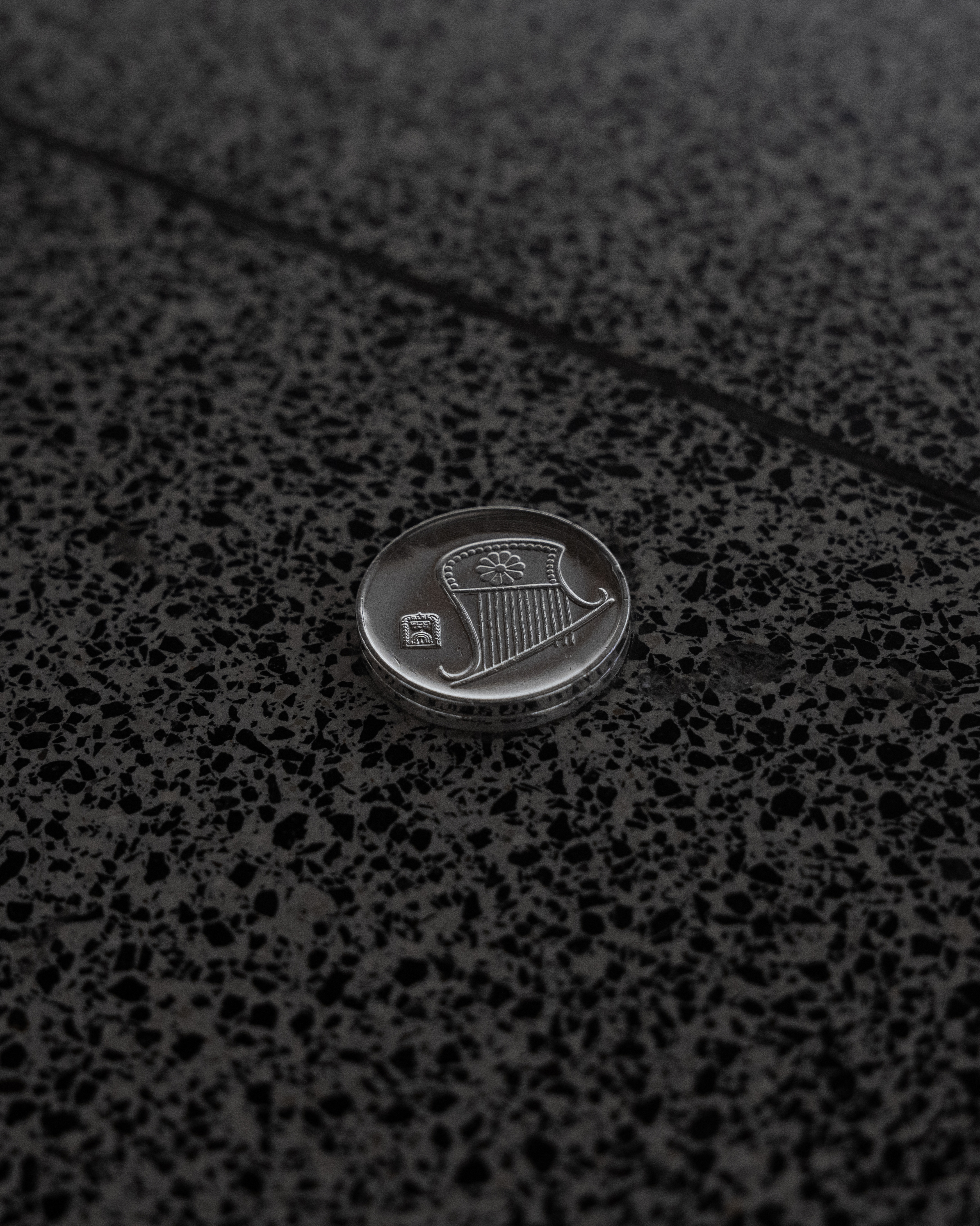 Shekel (2025)
Shekel (2025)two silver plated half shekel coins
The Israeli half-shekel coin, though seemingly mundane, resonates with the myth of Orpheus and the ancient tradition of placing a coin in the mouth of the dead as payment to Charon for passage across the Styx. In this light, the half-shekel echoes Orpheus’s own negotiation at the threshold of death, where his music becomes a kind of currency—immaterial yet powerful enough to move the gods. The everyday coin thus acquires a mythological dimension, symbolizing not only economic value but also the possibility of crossing boundaries and confronting the ineffable.
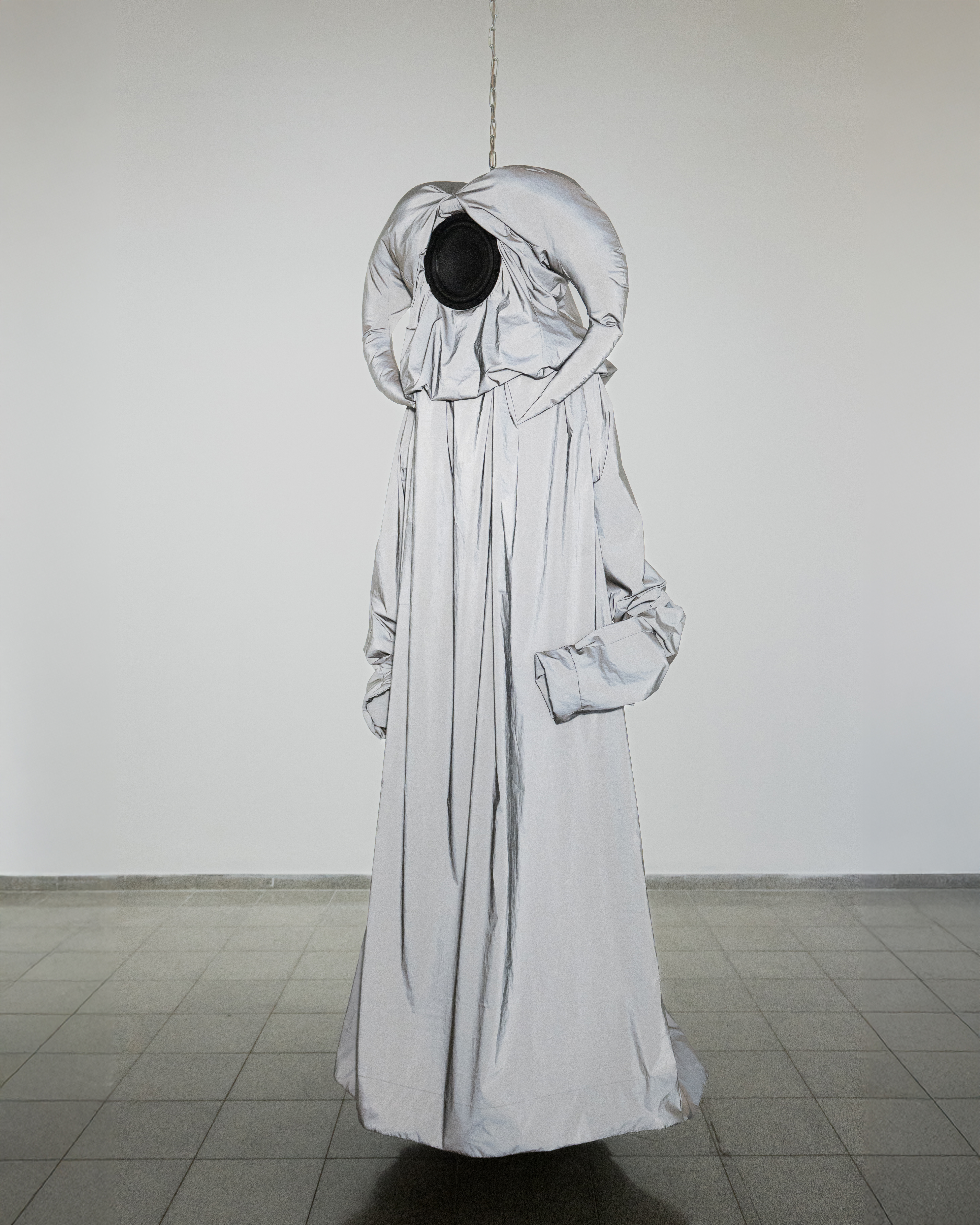
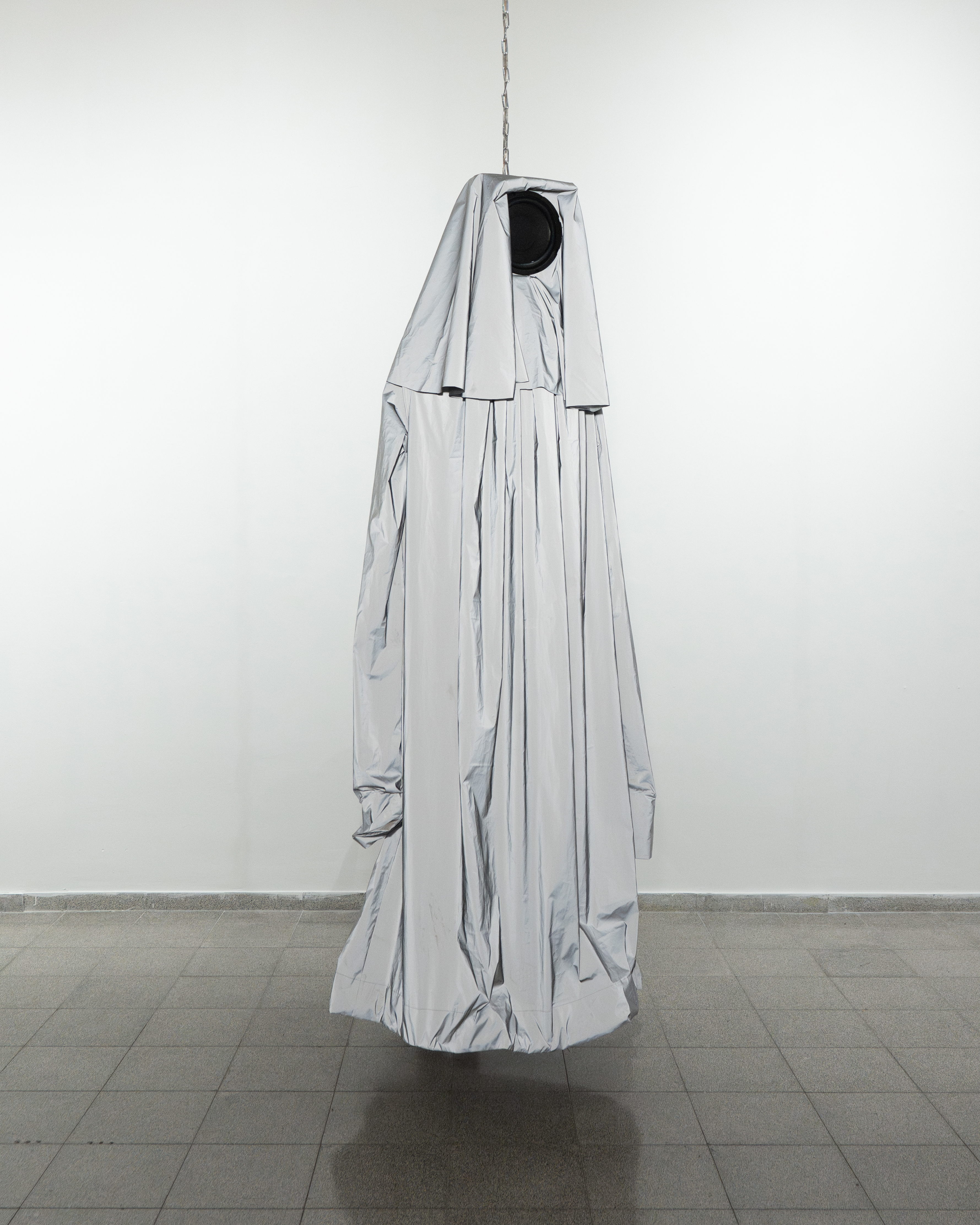
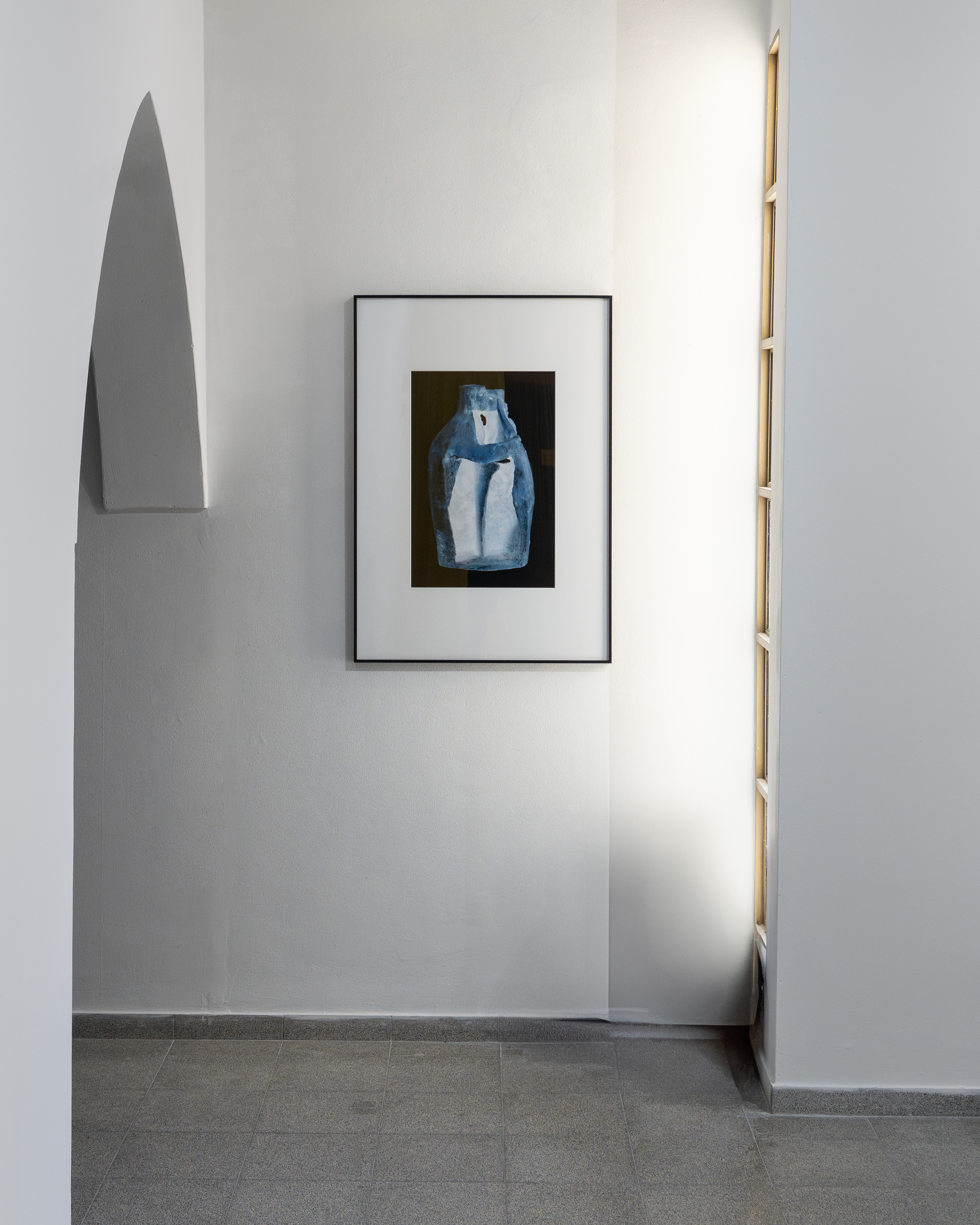
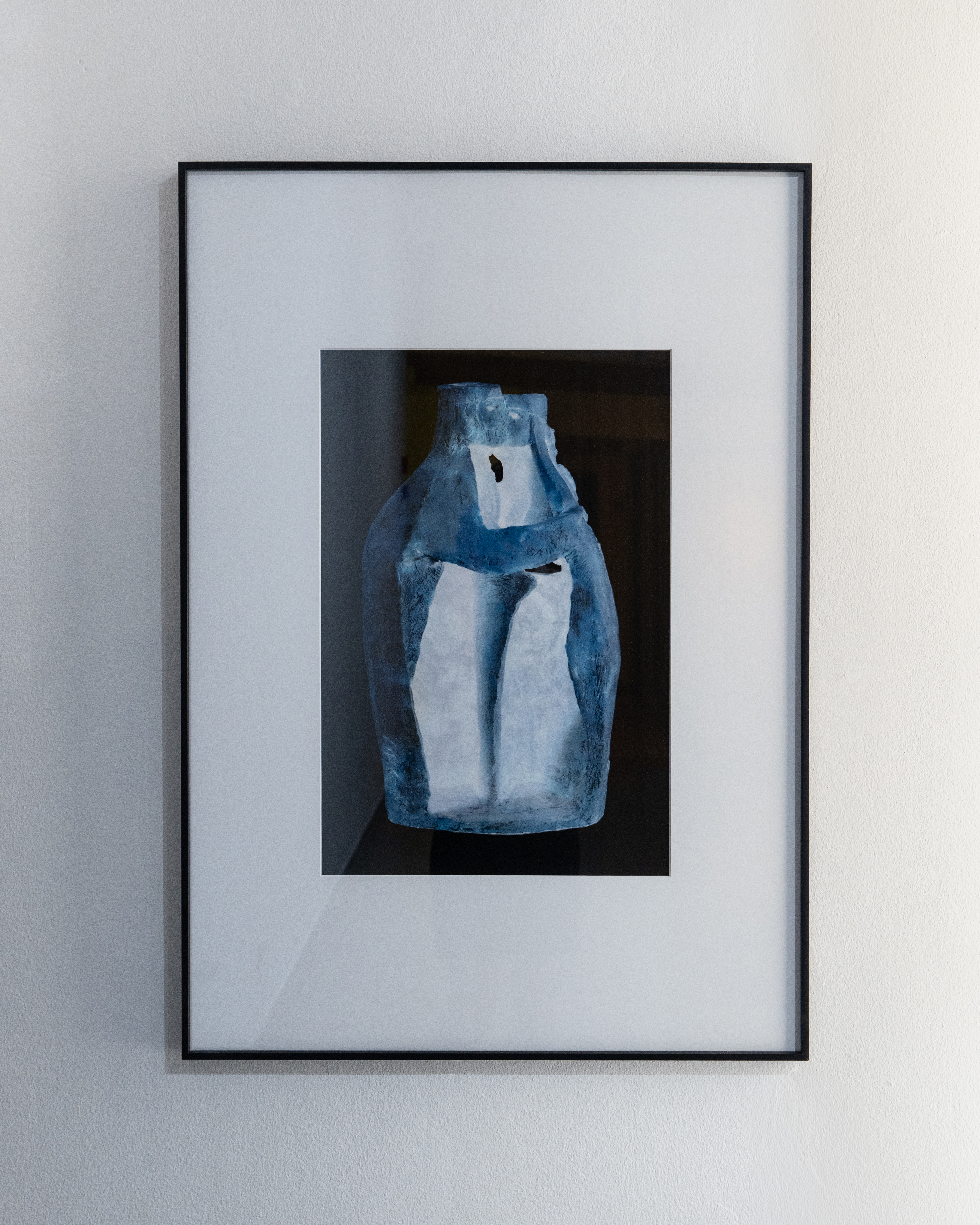 Hug (2025)
Hug (2025)printed on paper, 100 x 70 cm
The work presents a negative photograph of Nahum Gutman’s sculpture of an embracing couple, from which light emerges. The photographic inversion transforms a gesture of intimacy into a charged scene of memory and loss. The light breaking through the figures recalls the myth of Orpheus, where music and radiance serve as forces that traverse boundaries between life and death, love and loss. The familiar image thus becomes a symbol of the human longing for union, marked by an irreparable fracture within its very illumination.
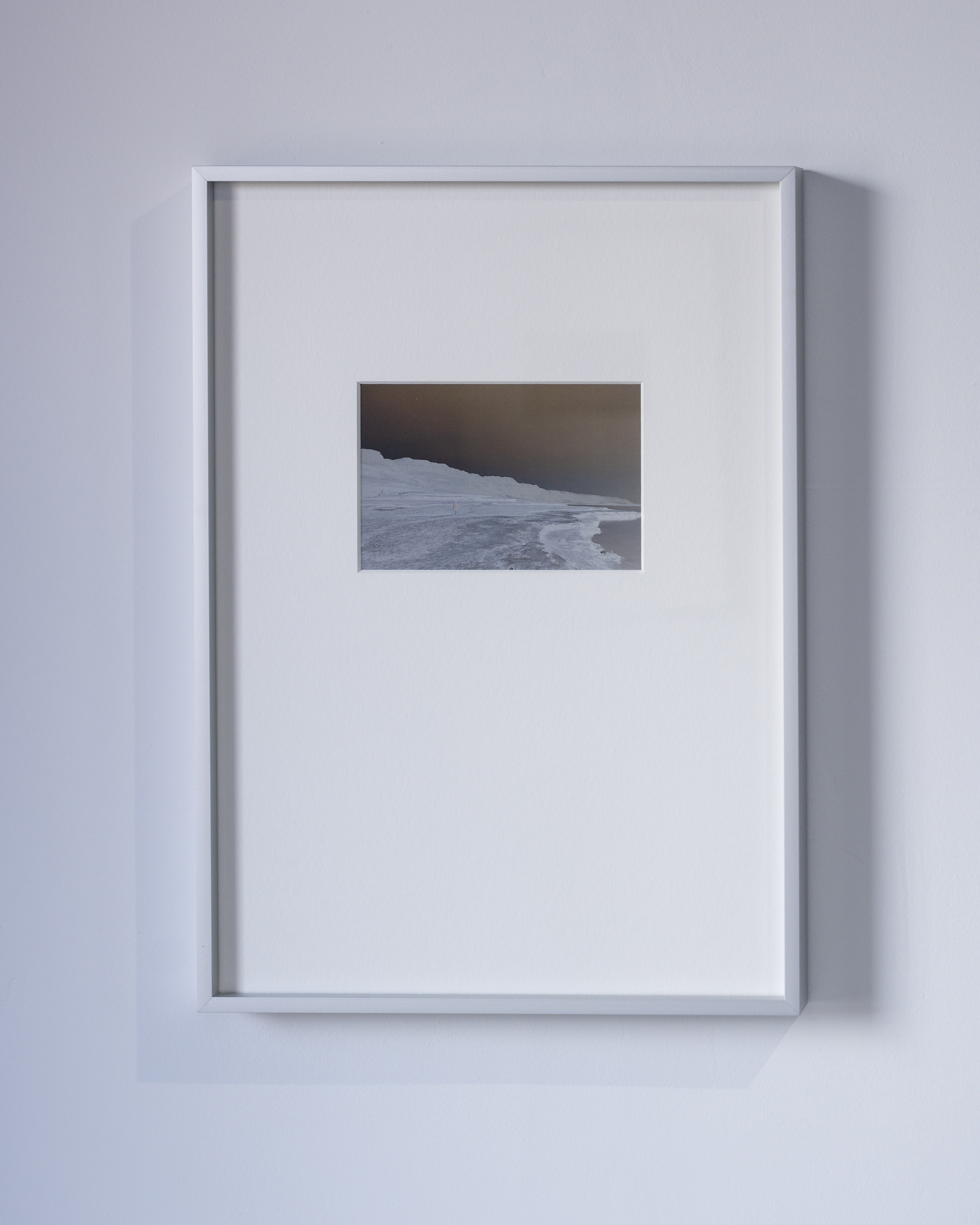
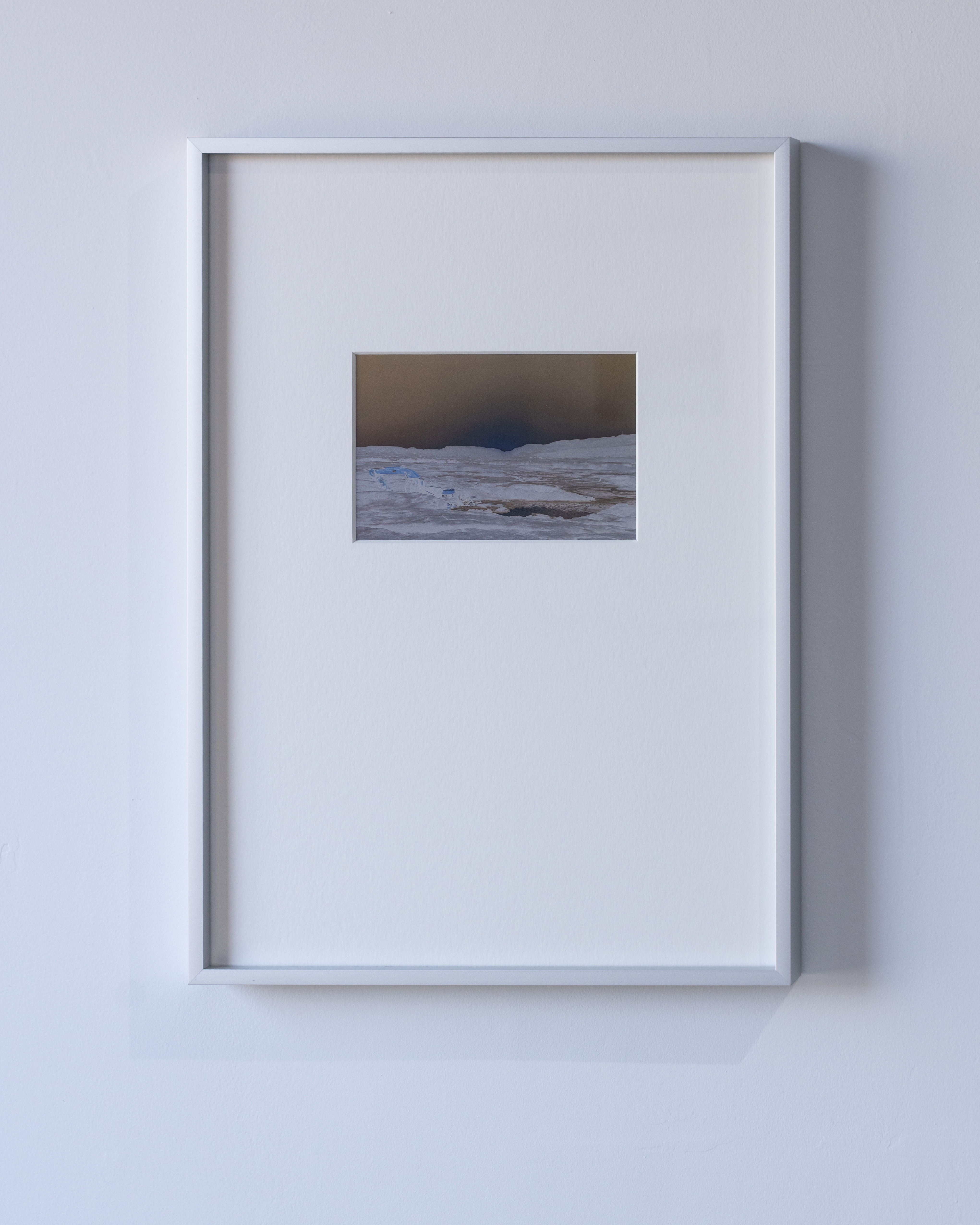 A&B (2025)
A&B (2025)printing on silver paper, 42 x 30 cm
The two photographs capture the sunset over the Dead Sea, printed on silver paper that reflects and amplifies the natural glow. The metallic surface enhances the fleeting quality of light, transforming the images as the viewer moves.
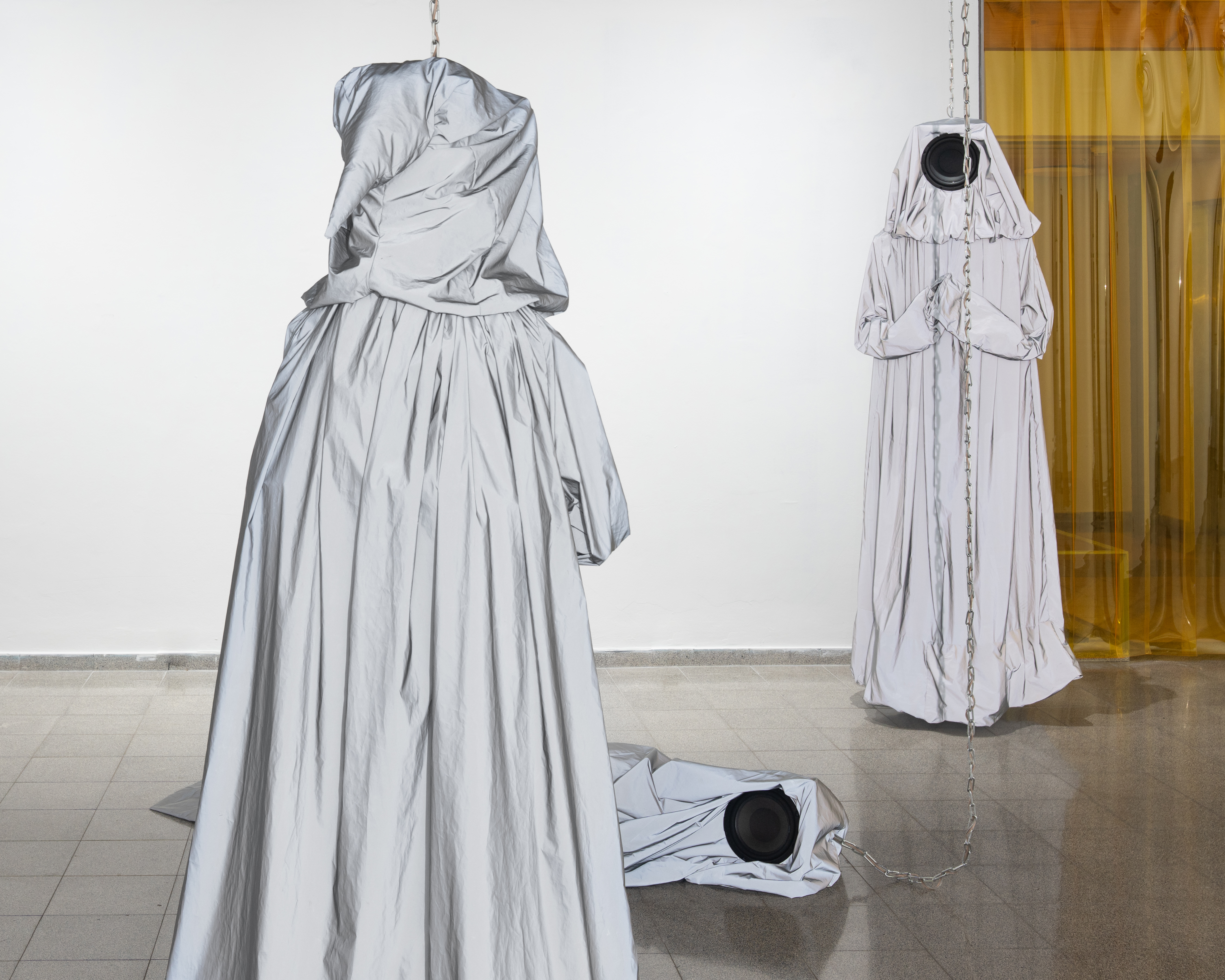
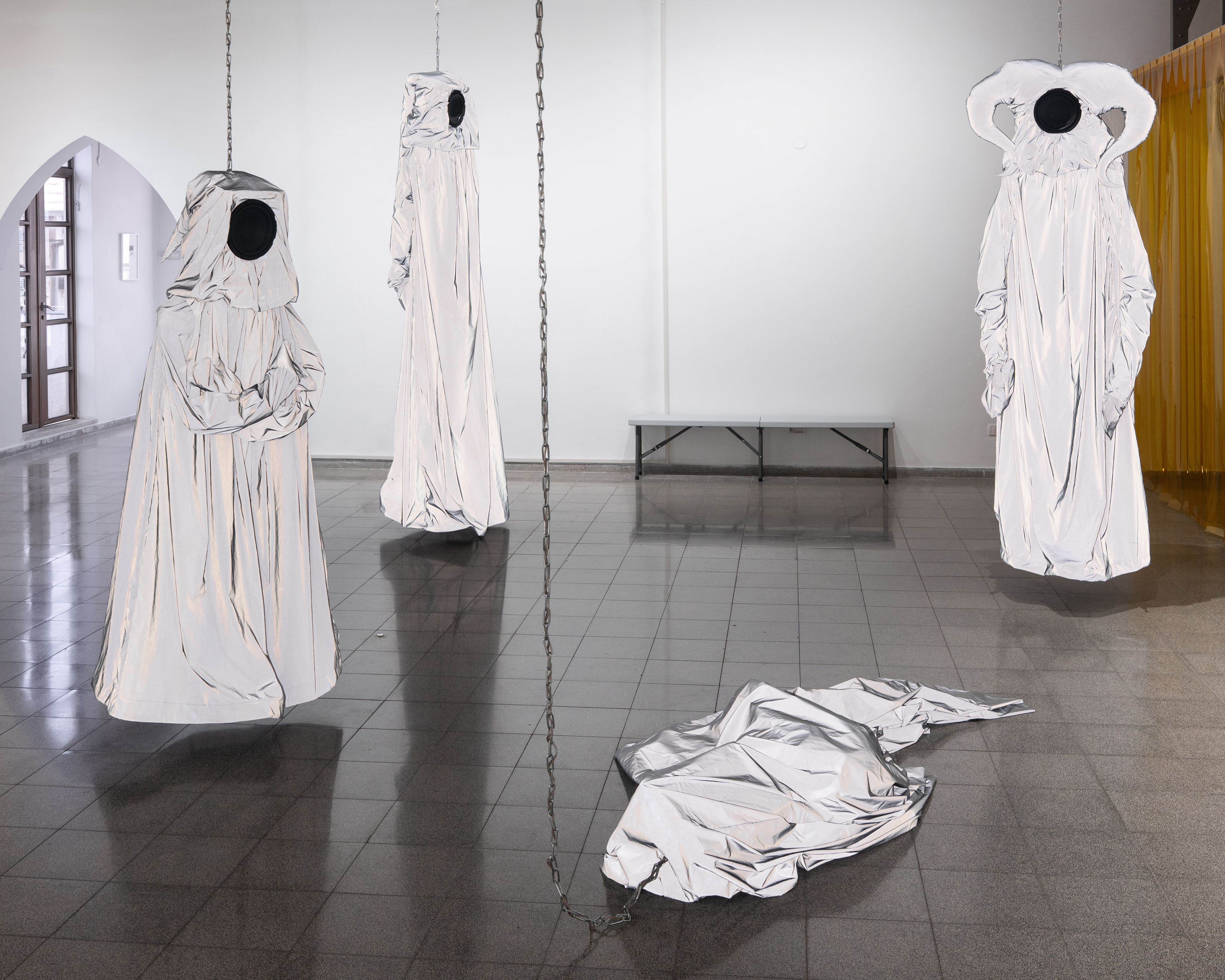
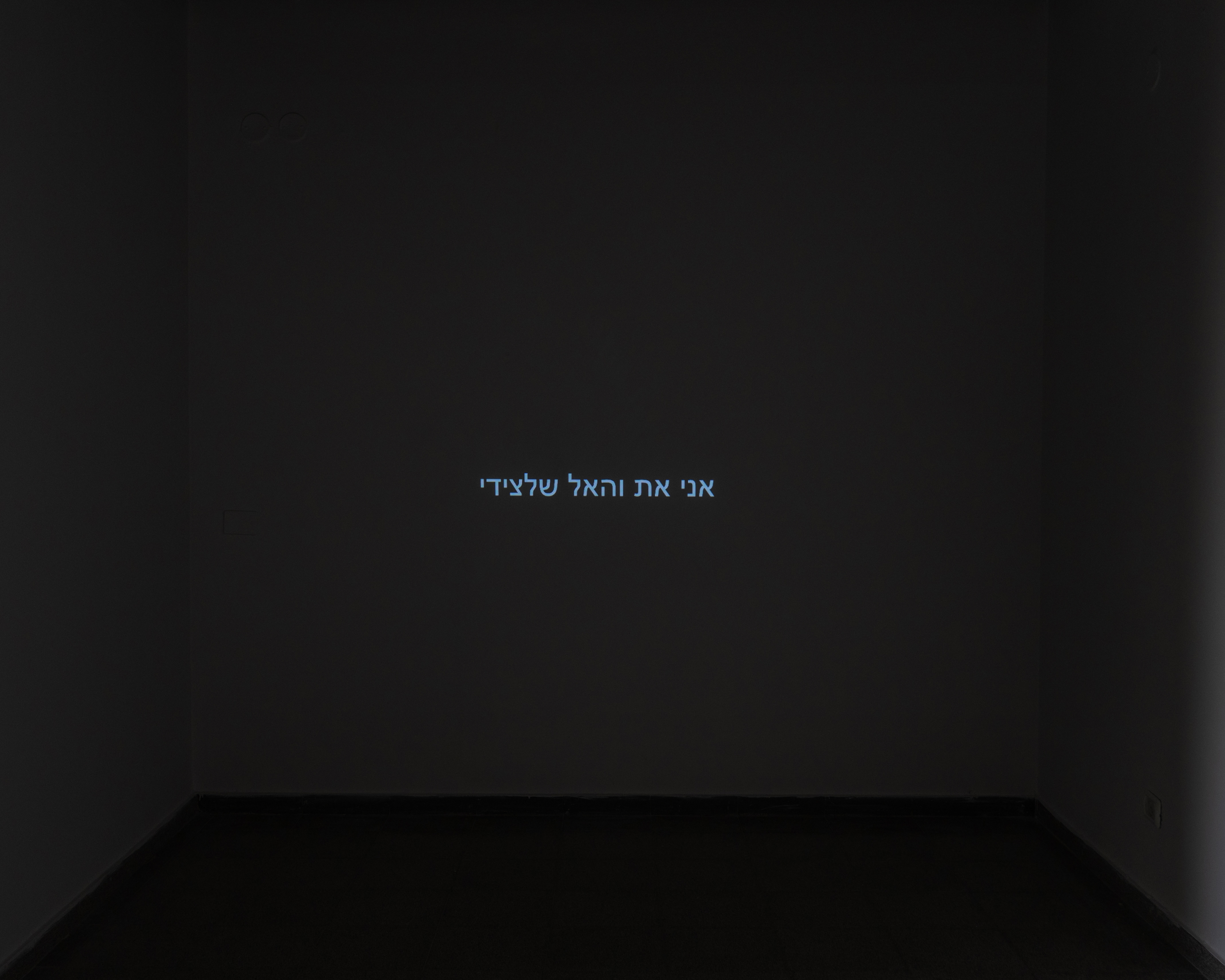
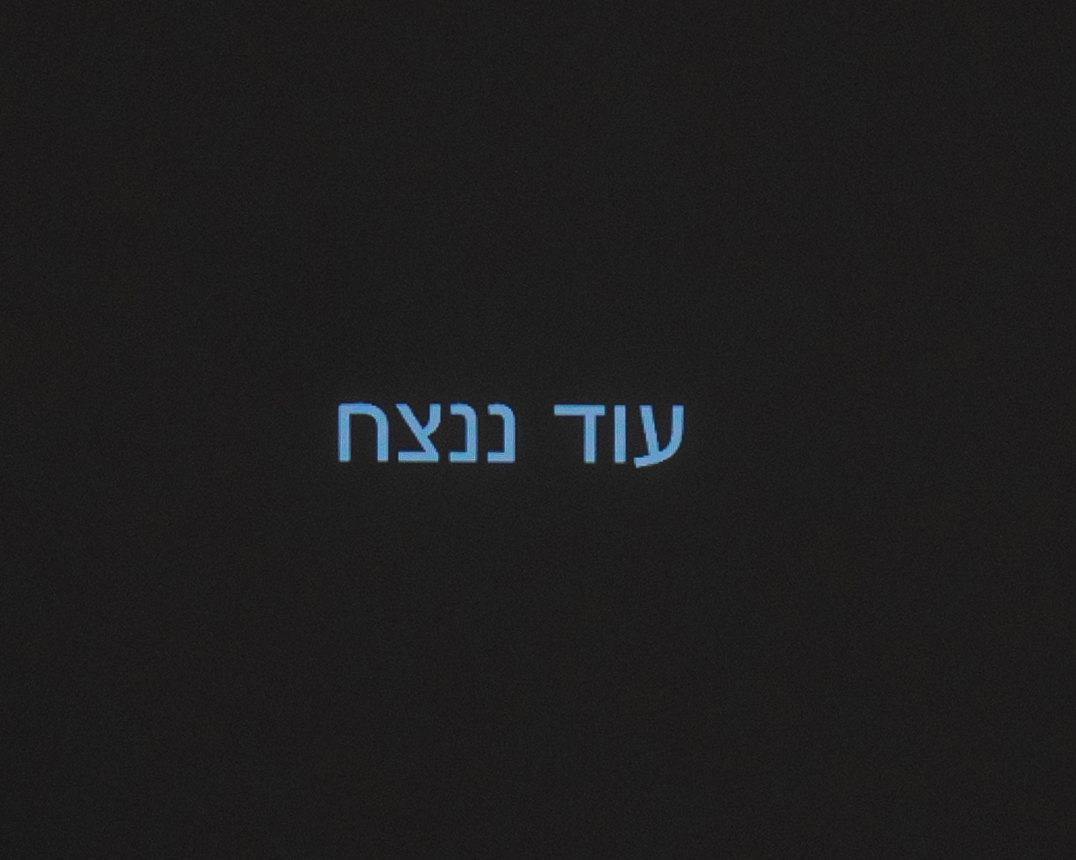
Because of the Wind (2025)
video loop, 2:23 minutes
The song “Because of the Wind” by Micha Shitrit, written in the early 1990s, expresses a persistent movement forward in the face of obstacles and uncertainty. The lyrical voice surrenders to an external internal force “the wind” which simultaneously embodies an uncontrollable element of nature and a metaphor for the muse, for faith, and for the power of creation.
In comparison with the myth of Orpheus, a fundamental parallel emerges: through his song, Orpheus penetrates the underworld and convinces the gods to return his beloved Eurydice. Yet his journey collapses in a moment of doubt, when he turns back to look at her. In the song, as in the myth, there is a tension between unwavering determination and the temptation of failure, between moving forward and the impulse to look back.
︎︎︎ Video documentation
